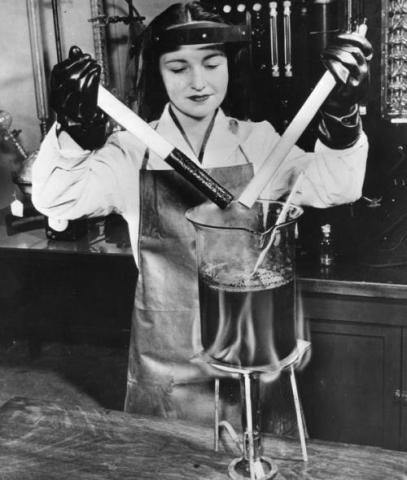
On this date (February 4) in 1941, Kinetic Chemicals, Inc., a partnership founded by General Motors and DuPont, received a patent for "tetrafluoro-ethylene polymers". DuPont began marketing the polymer commercially in 1944 and filed to trademark it under the name of Teflon in February 1945.
The polymer was accidentally discovered by chemist Roy J. Plunkett (1910-1994) in 1938 while he was working on developing new refrigerant chemicals at DuPont's Jackson Laboratory in Deepwater, New Jersey. Its' earliest uses were in the Manhattan Project, where it was used to coat components in the pipes of the project's Oak Ridge, Tennessee uranium enrichment plant. Today, the polymer's most common use is in aerospace wiring and computer components, but most consumers know it best as a coating for non-stick cookware, an application that began in the 1950s.
This ca. 1945 publicity photograph from DuPont shows a laboratory technician lifting two plastic rods from a bath of hot sulfuric acid to demonstrate the Teflon-coated rod's ability to withstand corrosive acids and solvents.
This photograph is from Hagley Library's collection of DuPont Company Product Information photographs (Accession 1972.341). You can view a selection of materials from this collection in our Digital Archive by clicking here. You can also check out a small curated Teflon themed collection of photographs and video at this link.

